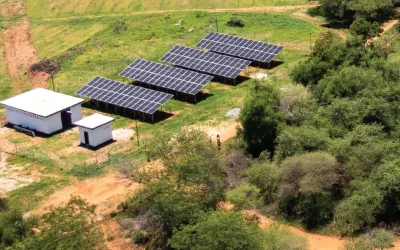Manufacturing sector attracts US$128m investments… . . . Country continues to scale up the re-industrialisation drive
ZIMBABWE’s manufacturing sector attracted US$128 million investments in 2023 compared to US$101 million invested in 2022 as the country continues to scale up the re-industrialisation drive in line with the Government’s National Development Strategy (NDS1).
Although this is a positive improvement for the economy, the Confederation of Zimbabwe Industries (CZI) 2023 manufacturing sector survey report released last Friday says the growth in investments did not result in corresponding increase in production.
The report further indicated that about 46 percent of firms invested to boost their capacity during the year under review, an increase from 40 percent recorded the previous year.
The lack of growth in output resulted in a decrease in capacity utilisation from 56,1 percent in 2022 to 53,2 percent in 2023.
“There was significant investment to boost capacity in 2023, the value of invested equipment by sample was US$128,7 million, an increase from US$101 million invested in 2022 but there was no corresponding increase in output,” says the report.
Asked what could have affected the manufacturing sector capacity utilisation, CZI chief economist Dr Cornelius Dube said: “There were two main reasons. The first is competitiveness. Competition from imported products was intense and given that the economy is largely dollarised, it is easier for firms operating in countries with weaker currencies to gain competitiveness through exchange rate gains.”
He said Zimbabwe’s manufacturing sector has been hard hit by an influx of cheap imports.
“These have brought unfair competition to the industry as some products are being sold for a ‘song’ after being smuggled into the country,” said Dr Dube.
He said some companies could not increase output due to suppressed demand as consumers opted for cheap imports.
The CZI survey also revealed that small companies recorded a change in output value by -0,5 percent, medium entities recorded a 0,2 percent and large cooperates recorded a 0,1 percent therefore the whole sector recorded a -0,1 percent.
All sectors recorded a decline in capacity utilisation where the small sector declined from 53 percent in 2022 to 49 percent in 2023, medium sector declined from 61 to 55 percent and large co-operatives declined from 63 to 57 percent.
The survey further revealed that in subsectors, the beverages sector recorded the highest capacity utilisation of 61 percent, followed by other metallic mineral products that recorded 60 percent capacity utilisation, wood and wood products recorded 57 percent together with the repair and installation.
The subsector that recorded the lowest capacity utilisation in 2023 is the paper and paper products segment, which recorded 36 percent followed by printing at 46 percent and wearing apparel at 47 percent while rubber and plastic products together with the chemicals and chemical products recorded 49 percent capacity utilisation. –chronicle








